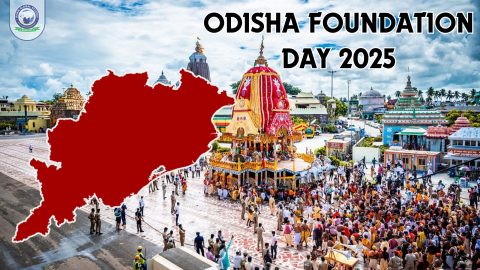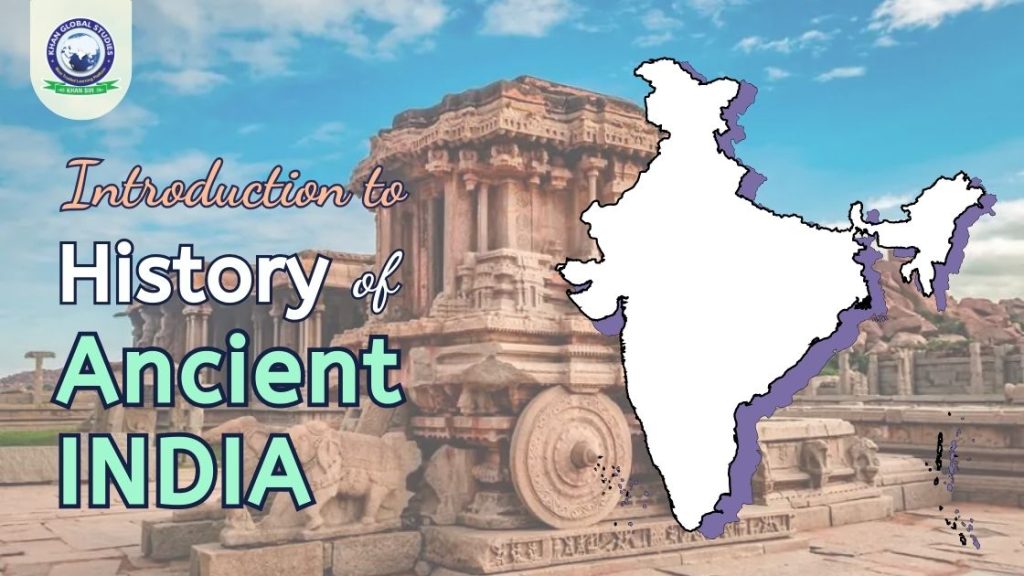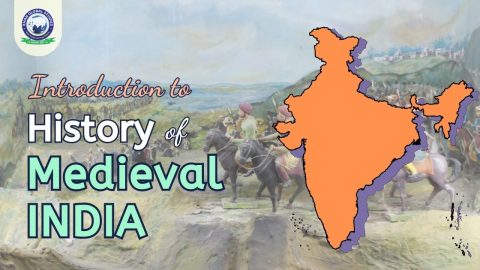Indian history began thousands of years ago with Homo Sapiens. Homo Sapiens reached the Indus Valley via Africa, South India, Baluchistan and established urbanization here, which led to the development of the Indus Valley Civilization. Indian history begins with the mystical culture of the Indus Valley and extends to farming communities in the southern regions of India. Through this blog, you will learn about the history of ancient India in detail.
Parts of Indian History
Like world history, to understand Indian history in detail, it has been classified into 3 parts, which are as follows:
- Ancient India
- Medieval India
- Modern India
History of Ancient India
The history of ancient India extends from the Stone Age to the Islamic invasions. Medieval India begins after the Islamic invasion.
Stone Age (पाषाण युग)
The Stone Age refers to the period when people were dependent on stones. Stone tools and stone caves were the mainstay of their life. This is from the early period of human civilization when humans were not as developed as they are today. During this period, humans struggled with natural disasters and earned their living by hunting and eating root and tuber fruits.
Palaeolithic Age (पुरापाषाण युग)
Most of the IceAge (हिमयुग) took place in the Paleolithic period. The Indian Palaeolithic Age has been divided into three parts based on tools and climate change –
- Early or Lower Palaeolithic (2500,000 BC – 100,000 BC)
- Middle Paleolithic Age (100,000 BC – 40,000 BC)
- Upper Paleolithic (40,000 BC – 10,000 BC)
No fossil of primitive man has been found in India. From the facts found at a place called Bori in Maharashtra, it is suspected that humans might have originated 14 lakh years ago. It is almost universally accepted that humans settled in India late compared to Africa. However, the stone skills of the people here developed in much the same way as in Africa. The humans of this time were able to procure their food with difficulty. He neither knew how to do farming nor how to build a house. This stage was in 9000 BC.
Palaeolithic tools dating back to 100,000 BC have been found in the Chhotanagpur Plateau. It could be up to. 20,000 BC in the Kurnool district of Andhra Pradesh. to 10,000 B.C. Tools dating back to 1500 BC have been found. Bone tools and remains of animals have also been found along with them. The remains of animals found in the Belan Valley of Mirzapur district of Uttar Pradesh show that goats, sheep, cows, buffaloes etc. were reared. Nevertheless, the primitive humans of the Paleolithic era lived by hunting and gathering food. There is mention in the Puranas of people who live by eating only fruits and roots. Some such people have been living in mountains and caves till modern times.
Neolithic Age (नवपाषाण युग)
Neolithic remains in India probably date back to 6000 BC to 1000 BC. This period of development in the Indian subcontinent came a little late as it is believed that in the larger part of the world (South-West Asia) this period was around 8000-7000 BC. From here it developed and reached Europe through the Nile Valley (Egypt). In this era, humans used to prepare tools like hand axes etc. by peeling, grinding and polishing stones. A site of the Neolithic age has been found in Burzahom (Kashmir) in North India.
Copper Age (ताम्र युग)
The use of metals had started by the end of the Neolithic Age. In the Chalcolithic Age, only copper and stone weapons were used. Till this time the use of iron or bronze had not started. Chalcolithic settlements in India have been found in south-eastern Rajasthan, western Madhya Pradesh, western Maharashtra and south-eastern India. And there were forests all over India.
Events in Ancient Indian History
- Prehistoric Period (प्रागैतिहासिक काल): 400000 BC-1000 BC: During this time man discovered fire and the wheel.
- Indus Valley Civilization (सिंधु घाटी सभ्यता): 2500 BC-1500 BC: The Indus Valley Civilization was the first systematically settled civilization. The beginning of urbanization is considered to be from the Indus Valley Civilization.
- Epic Age (महाकाव्य युग): 1000 BCE-600 BCE: During this period, the Vedas were compiled and divided into classes such as Aryans and Dasas.
- Hinduism and Change (हिंदू धर्म और परिवर्तन): 600 BC-322 BC: During this period the caste system was at its peak. The result of this conservatism in the society was the birth of Mahavir and Buddha. At this time Mahajanapadas were formed. 600 BC – 322 BC Bimbisara, Ajatashatru, Shishunanga and Nanda dynasties were born.
- Maurya Period (मौर्य काल): 322 BC-185 BC This empire established by Chandragupta Maurya included the entire North India, which was further expanded by Bindusara. The Kalinga War is an event of this period, after which King Ashoka adopted Buddhism.
- Invasions (आक्रमण): 185 BC-320 AD: During this period there were invasions by the Bactrians, Parthians, Shakas and Kushans. Central Asia opened up for trade, gold coins came into use and the Saka era began.
- Deccan and South (दक्कन और दक्षिण): 65 BC-250 AD: During this period, the Chola, Chera and Pandya dynasties established their rule over South India. The construction of Ajanta-Ellora caves, apart from this, Sangam literature and the arrival of Christianity in India are the results of this period.
- Gupta Empire (गुप्त साम्राज्य): 320 AD-520 AD: During this period, Chandragupta I established the Gupta Empire, the Classical Age arrived in North India, Samudragupta expanded his dynasty, and Chandragupta II fought against the Shakas. Shakuntalam and Kamasutra were composed during this period. Aryabhata did amazing work in astronomy and at this time the Bhakti sect also emerged.
- Rise of Small Kingdoms (छोटे राज्यों का उद्भव): 500 AD-606 AD: This era saw migration towards Central Asia and Iran with the arrival of the Huns in North India. As a result of wars between many dynasties in the north, many small states were formed.
- Harshavardhana (हर्षवर्धन): 606 AD-647 AD: During the reign of Harshavardhana, the famous Chinese traveller Hentsang travelled to India. Due to the attack of the Huns, Harshvardhan’s kingdom was divided into many small states. At this time Deccan and South became extremely powerful.
- Southern Dynasties (दक्षिण राजवंश): 500 AD-750 AD: During this period, the Chalukya, Pallava and Pandya empires emerged and the Parsis arrived in India.
- Chola Empire (चोल साम्राज्य): 9th-century AD-13th century AD: The Chola Empire established by Vijayalas adopted a maritime policy. During this period, temples became cultural and social centres and the Dravidian language began to flourish.
- Northern Empire (उत्तरी साम्राज्य): 750 AD-1206 AD: During this period the Rashtrakutas became powerful, the Pratiharas ruled Avanti and the Palas ruled Bengal. Along with this, Rajputs were rising in Central India. During this time, the Turks invaded India, after which medieval India began.
Bronze Age and Indus Valley Civilization (कांस्य युग और सिंधु घाटी सभ्यता)
Indian history originates from the Indus Valley Civilization. The Indus Valley Civilization spread in the western part of South Asia around 2500 BC. Important information about the Indus Valley Civilization in Indian History is given below:
1. This region is today known as Pakistan and Western India.
2. The Indus Valley Civilization is divided into 4 parts:
- Indus Valley Egypt
- Mesopotamia
- India
- China
3. Until 1920 man knew nothing about the Indus Valley Civilization.
4. But when the Indian Archaeological Department excavated this valley, they came to know about two old cities.
- Mohenjodaro (मोहनजोदाड़ो)
- Harappa (हड़प्पा)
5. Everything was found somewhere right here:
- Household Items
- Weapons of War
- Gold Jewellery
- Silver Jewellery
- Seal
- Toys
- Utensil
6. The Indus Valley Civilization is also called the centre of trade.
7. Everything was very well taken care of here.
8. The Indus Valley Civilization also had wide roads and well-developed drainage systems.
9. The houses here were made of painted bricks.
10. Furthermore, there were two or more floors.
11. The Harappan Civilization ended by 1500 BC.
12. It is believed that the Indus Valley Civilization was also destroyed due to natural disasters.
Vedic Period (वैदिक काल)
The new civilization that developed in India after the Indus Valley Civilization is known as the Aryan or Vedic civilization. We get information about this period mainly from the Vedas, in which Rigveda is the most important because it is the oldest. The Vedic period is divided into the Rigvedic period or Early Vedic period (1500 – 1000 BCE) and the Later Vedic period (1000 – 600 BCE). Generally, most scholars consider the period of Vedic civilization to be between 5000 BC to 500 BC.
Later Vedic Period (उत्तरवैदिक काल)
In the Rigvedic period, the Aryans lived between the Indus and Saraswati rivers. Later they spread throughout North India. The main area of civilization became the plain of the Ganges and its tributaries. Ganga is today considered the most sacred river of India. During this time the world expanded and many people became extinct. People like Bharata, Tritsu and Turvasa disappeared from political circles while Puru became more powerful than before. Some new states developed in eastern Uttar Pradesh and Bihar, such as Kashi, Kosala, Videha (Mithila), Magadha and Anga.
Saraswati River is considered the most important in the Rigvedic period. The Ganga and Yamuna rivers are mentioned only once. During this period, baked bricks were used for the first time in Kaushambi city. During this period, varnas started being determined based on the birth instead of occupation.
Vedic literature (वैदिक साहित्य)
- Vedic literature includes the four Vedas and their Samhitas, Brahmanas, Aranyakas, Upanishads and Vedangas.
- The number of Vedas is four – Rigveda, Samaveda, Yajurveda and Atharvaveda.
- Rigveda, Samaveda, Yajurveda and Atharvaveda are the first authentic texts of the world.
- Vedas have been called Apaurusheya (अपौरुषेय). The Vedas are called “Shruti” because they were memorized orally by the Guru to the disciples.
Rigveda (ऋग्वेद)
- Rigveda is a collection of compositions related to the praise of gods.
- It is divided into 10 divisions. In this, sections 2 to 7 are considered to be the most ancient. The first and tenth divisions were added later. There are 1028 hymns in it.
- Its language is poetic.
- Rigveda mentions 33 types of deities (substances with divine qualities).
- The famous Gayatri Mantra addressed to Gayatri, the goddess associated with the Sun, is first found in the Rigveda.
- The sentence ‘Asato Ma Sadgamaya’ (असतो मा सद्गमय) is taken from Rigveda.
- In Rig Veda, women’s names are also found in memorizing mantras, prominent among them are Lopamudra, Ghosha, Shachi, Paulomi Kashkavritti etc.
- The name of its priest is Hotri.
Yajurveda (यजुर्वेद)
- Yaju means sacrifice. There is mention of archery in this.
- Yajurveda The methods of Yagya have been described in the Vedas.
- In this, mantras have been compiled to recite the scriptures during the ritual yagya.
- It also contains details of the mantras as well as religious rituals that are suggested to be performed along with the chanting.
- The language of Yajurveda is both poetic and prosaic.
- There are two branches of Yajurveda – Krishna Yajurveda and Shukla Yajurveda.
- There are four branches of Krishna Yajurveda – Maitrayani Samhita, Kathak Samhita, Kapinthal and Samhita. Shukla Yajurveda has two branches – Madhyandin and Kanva Samhita.
- It is divided into 40 chapters.
- Two royal ceremonies called Rajasuya and Vajpayee are mentioned for the first time in this book.
Samveda (सामवेद)
Samveda was composed to make the mantras given in Rigveda suitable for singing.
- It has 1810 verses, of which all but 75 are mentioned in the Rigveda.
- Samaveda is divided into three branches – Kauthum, Ranayaniya and Jaimanya.
- Samaveda has the distinction of being the first musical text of India.
Atharvaveda (अथर्व वेद)
- This Veda contains descriptions of mystical knowledge, miracles, magic and Ayurvedic herbs.
- It contains a total of 5687 mantras in 20 chapters.
- Atharvaveda is divided into eight sections. There are two types of Vedha Veda and Dhatu Veda.
Buddhism and Jainism (बौद्ध और जैन धर्म)
By the sixth century BCE, adherence to the Vedic ritual tradition had waned. Upanishads have given freedom regarding the basic problems of life. As a result, many religious sects and sects were established. At that time information about 62 such sects was available. But only two of these influenced the Indian public for a long time – Jainism and Buddhism.
Jainism was already in existence. Both are based on Shramana culture. The Vedics later adopted the Shramana culture in the Upanishads.
Jainism (जैन धर्म)
Two Tirthankaras of Jainism – Rishabhanatha and Arishtanemi – are mentioned in the Rigveda. Some scholars think that the statue with a naked torso found in the excavation of Harappa is of a Tirthakar. Parshvanath was the twenty-third Tirthankara and Lord Mahavira was the twenty-fourth Tirthankara. Vardhaman Mahavira, the most prominent and last Tirthankara of the Jains, was born in Kundgram near Vaishali around 540 BC. At the age of 42, he attained Kaivalya (supreme knowledge).
Mahavir accepted the four principles of Parshvanath –
- Non-violence (अहिंसा)
- Amrisha (अमृषा) – don’t lie
- Asteya (अस्तेय) – Do not steal
- Aparigraha (अपरिग्रह) – not accumulating wealth
Apart from this he also added his fifth principle to his teachings –
Brahmacharya (ब्रह्मचर्य) – control over senses
There are two parts of this sect – Shwetabar (श्वेताबर) and Digambara (दिगंबर).
Buddhism (बौद्ध धर्म)
Like Jainism, it also originated from the upper-class Kshatriya family. Mahatma Buddha, born with the name Gautam, was born in 563 BC to King Shuddhodan of Shakyakul. After living a worldly life, one day (or night) suddenly he left his home and set out in search of truth.
Buddha’s teachings contain four noble truths –
- Sadness (दुख)
- Bereaved Community (दुख समुद्दय)
- Pain Relief (दुख निरोध)
- Relief from Sorrow Gamini Pratipada (दुख निरोध गामिनी प्रतिपदा).
He suggested the Eightfold Path by following which man can free himself from the bondage of rebirth –
- Proper Speech (सम्यक वाक्)
- Right Action (सम्यक कर्म)
- Decent Livelihood (सम्यक आजीविका)
- Proper Exercise (सम्यक व्यायाम)
- Perfect Memory (सम्यक स्मृति)
- Samyak Samadhi (सम्यक समाधि)
- Appropriate Solution (सम्यक संकल्प)
- Right Vision (सम्यक दृष्टि)
The influence of Buddhism spread outside India also. Apart from Afghanistan (then under Persian rulers), China, Japan and Sri Lanka, it also left its mark in Southeast Asia.
Maurya Empire (मौर्य साम्राज्य)
The Maurya Empire, based in Magadha, was a geographically widespread Iron Age historical power in South Asia, founded by Chandragupta Maurya in 322 BCE. Due to the conquest of the Indo-Gangetic plain, the Maurya Empire became centralized and its capital was located at Pataliputra (modern Patna). Outside this imperial center, the geographical extent of the empire depended on the loyalty of the military commanders who controlled the armed cities that sprinkled it. During the reign of Ashoka (268–232 BCE), the empire briefly controlled the major urban centers and arteries of the Indian subcontinent except for the far south. It declined after about 50 years of Ashoka’s rule and was dissolved with the assassination of Brihadratha by Pushyamitra Shunga in 185 BCE and the establishment of the Shunga dynasty in Magadha.
Gupta Empire (गुप्त साम्राज्य)
The Gupta Empire had two important kings, Samudragupta and Chandragupta II. It was through the people of the Gupta dynasty that the unity of Sanskrit was reestablished. Chandragupta I established the Gupta dynasty in 320 AD and this dynasty ruled till about 510 AD. In 463-473 AD, all except Narasimhagupta Baladitya were the kings of the Gupta dynasty. Baladitya had converted to Buddhism, initially, he ruled only Magadha, but then gradually he subjugated the entire North India. The emperors of the Gupta dynasty were Shrigupta, Ghatotkacha, Chandragupta I, Samudragupta, Ramagupta, Chandragupta II, Kumaragupta I (Mahendraditya) and Skandagupta respectively. There was no powerful central power in the country that could establish a unified governance system by conquering various small and big states. This period represents an opportunity for maximum improvement to fulfil the ambitions of a great commander. As a result, such great and great generals kept getting destroyed in the Gupta dynasty of Magadha.
FAQs
Question: How old is Indian civilization?
Answer: Indian civilization is considered to be about 8,000 years old.
Question: Why was Bharatvarsha named Bharat?
Answer: It is believed that the name Bharat was named after Bharat, son of Rishabhdev.
Question: How many periods has history been divided into?
Answer: In three time periods: Ancient Period, Medieval Period and Modern Period.




